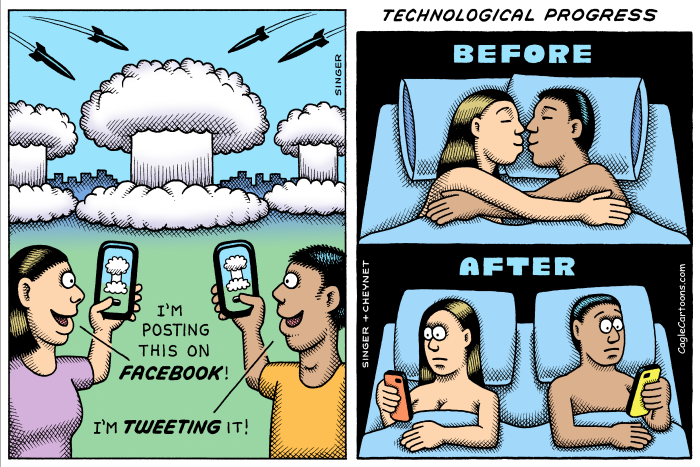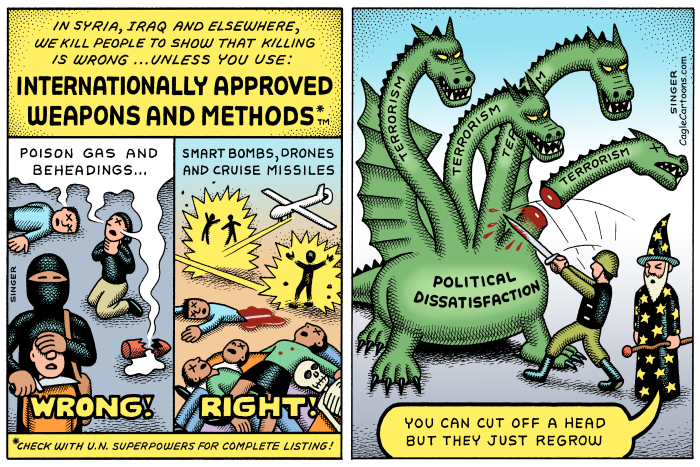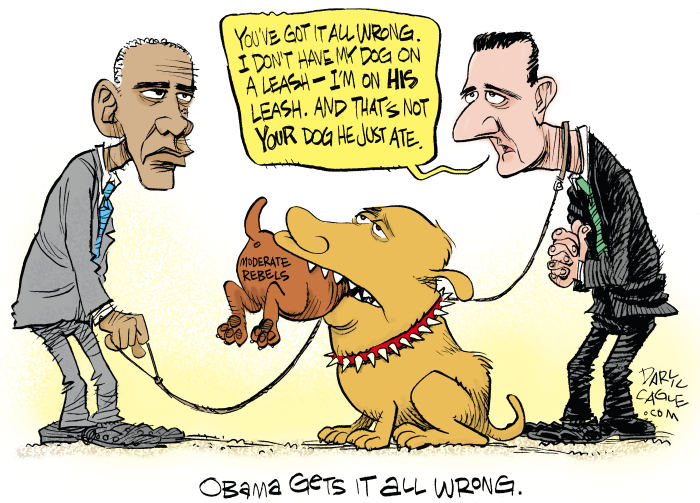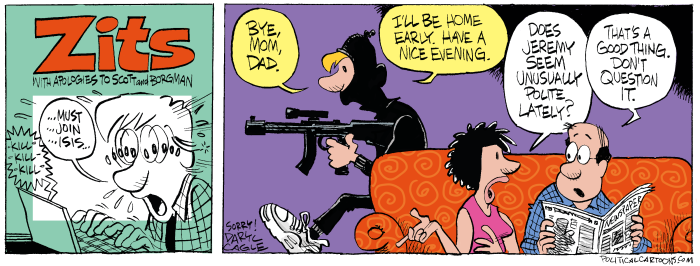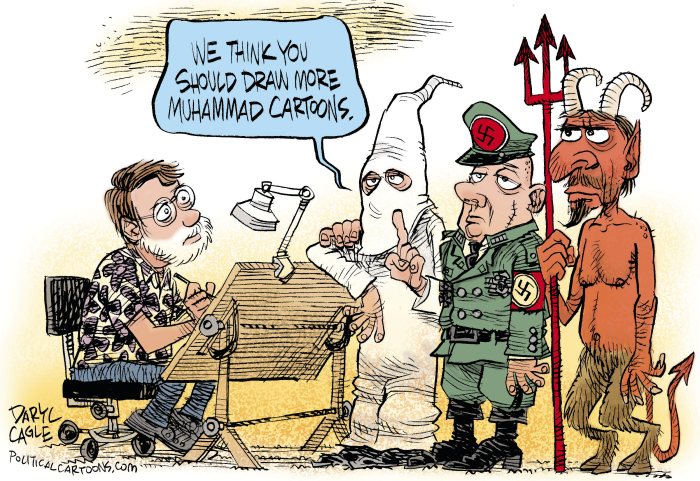Pundits like to complain that there are few voices from the Islamic world that condemn terrorist attacks by Islamic extremists. I run a small business that distributes editorial cartoons from around the world. With every major attack, including the recent attacks in Paris, I see a chorus of cartoons from Arab countries condemning the terror. The pundits must not be looking at the cartoons.

Editorial cartoonists are typically the most influential voices in newspapers throughout the Middle East, reflecting the views of their readers. Newspapers remain important in everyday life in the Middle East. Editorial cartoons grace the front pages throughout the Middle East. Arabic language cartoonists are typically anti-American and anti-Semitic, but on issues of terrorism they are largely voices of reason.
I often hear politicians complain about how the war with Islamic extremists is a battle for hearts and minds and we need to step up our role in an information war that we are losing. Editorial cartoons could be a weapon on the
front lines of that battle. By now Americans should see how powerful cartoons can be; clearly the terrorists see this, as cartoonists are among their primary targets. It is difficult for Americans to comprehend that editorial cartoons are important and effective in the Middle East because we view cartoons as trivial jokes, leading us to miss many opportunities.
Until recently, the US State Department had programs that brought American cartoonists on speaking tours to the Middle East to meet their colleagues, and had reciprocal programs to bring Arabic language editorial cartoonists to America. The programs sought to spread common values to countries where persecuted and influential cartoonists typically are barred from drawing their own presidents. These effective State Department speaking programs for editorial cartoonists were dropped at the time of the “sequester” budget cuts. USAID supported journalism education initiatives in the Middle East ignore and exclude cartoonists.
As international respect for America has plummeted, respect for many of our institutions still runs high. American cartoonists are respected around the world, like American jazz musicians and basketball players. Middle Eastern cartoonists are eager to have their work appreciated by American readers and by the star American cartoonists who they respect and emulate. The Arab cartoonists push back against the press restrictions imposed by their regimes and envy America’s press freedoms.
Every act of terror brings new recruits to the Islamic extremists in ISIS; they seek glory, selling an image of bravery, striking back against the arrogant infidels in the West. Brandishing a gun demands a kind of respect. Fighting for religious values, no matter how twisted, demands a kind of respect. ISIS craves respect; what they can’t bear is ridicule. Islamic extremists who are widely seen as the butts of jokes won’t find many eager converts.

Cartoonists are masters of disrespect and are a continuing threat to the Islamic extremists. It is no surprise that editorial cartoonists are prime targets for terror. Along with other web sites around the world, my own editorial cartoon Web site, Cagle.com, is suffering hacker attacks that appear to originate with terrorists and despotic regimes who fear cartoons. Terrorists and despots have a weakness in common; they can’t take a joke.
America needs to wake up, deploy and support the world’s best soldiers in the modern information war, American cartoonists.
This weekend President Obama claimed that he is already doing most of the things that his political opponents demand in the war with ISIS; he called on his critics to contribute new and constructive ideas on what should be done. My recommendation is inexpensive and powerful: bring back and greatly expand the State Department’s shuttered editorial cartoon programs around the world.





























 I’ve been a big fan of Andy Singer’s self-syndicated, altie “No Exit” panel for years, and I’ve been encouraging Andy to try his hand at more traditional editorial cartooning. Andy’s panel has content that is socially conscious, like an editorial cartoon, but it is not the right shape, and it is wordy, and it doesn’t have caricatures of politicians and the panel format with a title is simply not something editorial page editors will consider putting in their daily editorial cartoon hole.
I’ve been a big fan of Andy Singer’s self-syndicated, altie “No Exit” panel for years, and I’ve been encouraging Andy to try his hand at more traditional editorial cartooning. Andy’s panel has content that is socially conscious, like an editorial cartoon, but it is not the right shape, and it is wordy, and it doesn’t have caricatures of politicians and the panel format with a title is simply not something editorial page editors will consider putting in their daily editorial cartoon hole.